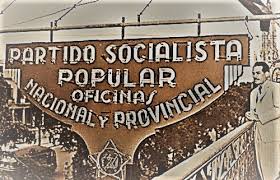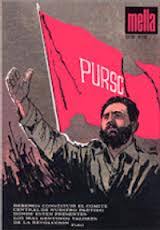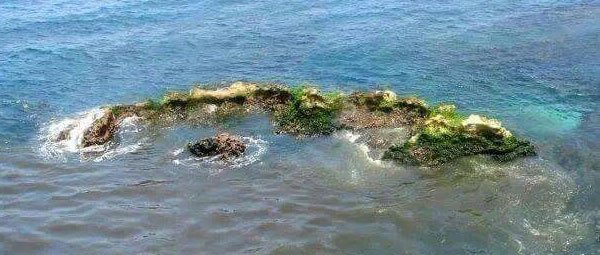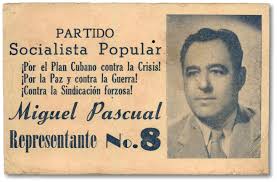 BREVE HISTORIA DEL PARTIDO COMUNISTA DE CUBA.(PSP), (ORI), (PURS), (PCC).PHOTOS.
BREVE HISTORIA DEL PARTIDO COMUNISTA DE CUBA.(PSP), (ORI), (PURS), (PCC).PHOTOS.
Partido comunista cubano data de la actividad comunista iniciada en Cuba en 1923. Bajo la constitución de 1976, se convirtió en el único partido autorizado para funcionar en Cuba, y en la constitución revisada de 1992 se definió como la “vanguardia organizada de la nación cubana”.
El Partido Comunista de Cuba (Partido Comunista Cubano) fue fundado en 1925 por miembros de la Tercera Internacional (Komintern) formados en Moscú. Durante tres décadas se adhirió a la línea estalinista pero, sin embargo, colaboró de manera oportunista con el régimen de Fulgencio Batista en la década de 1940 y principios de la de 1950, e incluso sus miembros fueron recompensados con puestos en el gobierno y el trabajo.
En 1944, el partido pasó a llamarse Partido Socialista Popular (Partido Socialista Popular; PSP); Conservó este nombre hasta 1961, cuando, después del derrocamiento de Batista por parte de Castro y la victoria de la revolución, el partido se fusionó con el Movimiento 26 de Julio (Movimiento 26 de Julio) y el Directorio Revolucionario (Directorio Revolucionario) de Castro para formar las Organizaciones Revolucionarias Integradas. (Organizaciones Revolucionarias Integradas; ORI). Al año siguiente, después de una purga generalizada de miembros con Aníbal Escalante “Viejo Comunista” acusado como líder, la ORI se reorganizó en el Partido Unificado de la Revolución Socialista (Partido Unificado de la Revolución Socialista).
El grupo formado alrededor de Anibal Escalante consideraba a la dirección revolucionaria, los dirigentes del Movimiento 26 de Julio, como elementos burgueses con planes de salir de la órbita moscovita y regresar a los brazos de Washington. De ahí el interés en contactar a la dirección soviética, a través de sus diplomáticos y periodistas en Cuba, a fin de convencerla de presionar a La Habana en el plano económico para que corrigiera sus posturas «aventureras». La ORI, a su vez, se disolvió el 5 de octubre de 1965 y fue reemplazado por el Partido Comunista de Cuba, organizado según las líneas soviéticas más ortodoxas.
El primer congreso del PCC se llevó a cabo en La Habana en 1975 cuando los miembros aprobaron una nueva constitución que lo estableció como la única entidad política legal en el país. En su congreso de 1991, el PCC reafirmó su régimen de partido único, en un momento en que el comunismo estaba colapsando en la Unión Soviética y en otras partes de Europa, pero permitió una inversión extranjera limitada y una reforma económica (reafirmada en 1997). Además, el congreso del partido eliminó oficialmente una regla que exigía que los miembros del partido fueran ateos.
Desde su fundación, el PCC ha estado dominado por Fidel Castro y su hermano Raúl Castro. La principal institución del PCC es el Politburó, cuyos 25 miembros provienen del Comité Central de 150 miembros seleccionados por el congreso del partido. El Politburó establece la política para el partido y el estado. En el congreso del partido de 1997, Raúl fue ungido por el muy enfermo Fidel como su futuro sucesor para encabezar el partido y el país y asegurar que la Revolución Cubana “nunca pueda ser corrompida por nadie [y] … nunca sea destruida por nosotros mismos”. En 2011 Raúl, que había sucedido a Fidel como presidente de Cuba en 2008, se convirtió en líder del partido. En 2019, Raúl nombró a Miguel Díaz-Canel como presidente de Cuba, pero aún ocupa los lugares más importantes en el gobierno bajo su administración y vigilancia.
 SHORT STORY OF THE CUBA’S COMMUNIST PARTY. (PSP), (ORI), (PURS), (PCC). PHOTOS.
SHORT STORY OF THE CUBA’S COMMUNIST PARTY. (PSP), (ORI), (PURS), (PCC). PHOTOS.
Cuban communist party is historically dating from communist activity begun in Cuba in 1923. Under the constitution of 1976, it became the only party permitted to function in Cuba, and in the revised constitution of 1992 it was defined as the “organized vanguard of the Cuban nation.”
The Cuban Communist Party (Partido Comunista Cubano) was founded in 1925 by Moscow-trained members of the Third International (Comintern). For three decades it adhered to the Stalinist line but, nevertheless, opportunistically collaborated with the regime of Fulgencio Batista in the 1940s and early ’50s, its members even being rewarded with posts in government and labor.
In 1944 the party had been renamed the People’s Socialist Party (Partido Socialista Popular; PSP); it retained this name until 1961, when, after Castro’s overthrow of Batista and the victory of the revolution, the party was merged with Castro’s 26th of July Movement (Movimiento 26 de Julio) and Revolutionary Directorate (Directorio Revolucionario) to form the Integrated Revolutionary Organizations (Organizaciones Revolucionarias Integradas; ORI). The next year, after a widespread purge of members with Anibal Escalante “Old Communist” accused as a leader.
The group formed around Anibal Escalante considered the revolutionary leadership, the leaders of the July 26 Movement, as bourgeois elements with plans to leave the Muscovite orbit and return to the arms of Washington. Hence the interest in contacting the Soviet leadership, through its diplomats and journalists in Cuba, in order to convince it to pressure Havana economically to correct its “adventurous” positions. The ORI, in turn, was dissolved on October 5, 1965, and was reorganized into the United Party of the Socialist Revolution (Partido Unificado de la Revolución Socialista), and was replaced by the Communist Party of Cuba, organized along the most orthodox Soviet lines.
The PCC’s first congress was held in Havana in 1975 when members approved a new constitution that established it as the sole legal political entity in the country. At its 1991 congress, the PCC reaffirmed its single-party rule—at a time when communism was collapsing in the Soviet Union and elsewhere in Europe—but it allowed limited foreign investment and economic reform (reaffirmed in 1997). In addition, the party congress officially removed a rule requiring party members to be atheist.
Since its founding, the PCC has been dominated by Fidel Castro and his brother Raúl Castro. The PCC’s leading institution is the Politburo, whose 25 members are drawn from the 150-member Central Committee selected by the party congress. The Politburo sets policy for the party and the state. At the 1997 party congress, Raúl was anointed by the very sick Fidel as his future successor to head the party and the country and to ensure that the Cuban Revolution “never can be corrupted by anybody [and]…never be destroyed by ourselves.” In 2011 Raúl—who had succeeded Fidel as president of Cuba in 2008—became party leader. In 2019 Raúl appointed Miguel Diaz-Canel as President of Cuba but still holding the most important places in the government under his administration and watch.
Agencies/ Wiki/ Various/ Internet Photos/ Extractos/ Excerpts/ Arnoldo Varona/ www.TheCubanHistory.com
THE CUBAN HISTORY, HOLLYWOOD.










